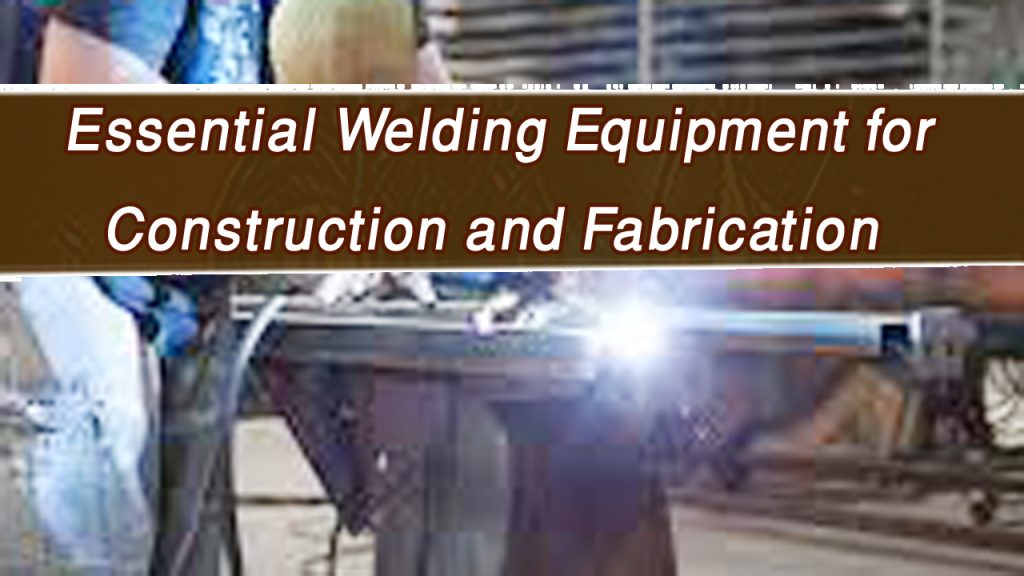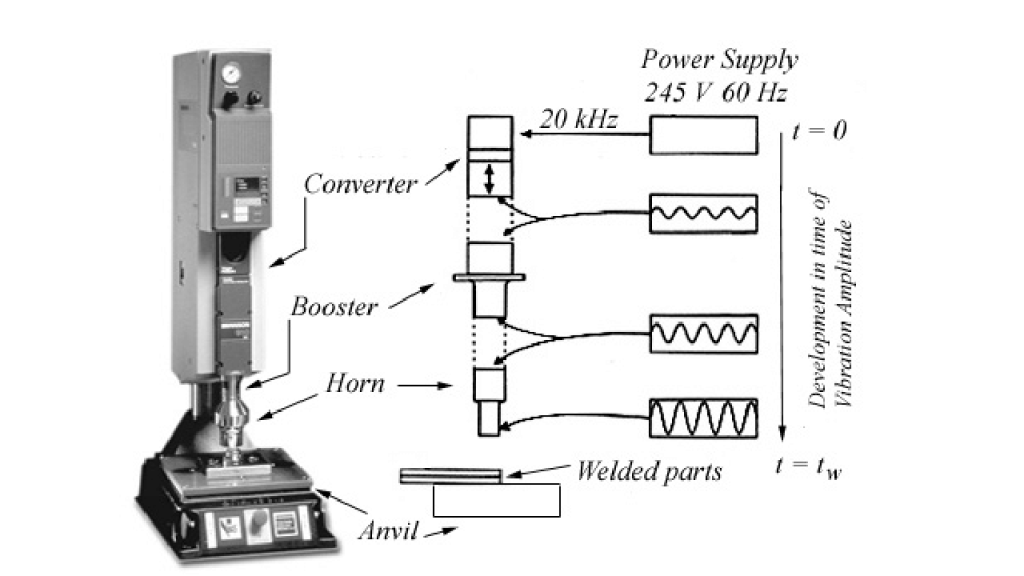When I first started welding, I was overwhelmed by the variety of tools and equipment. From safety gear to welding machines, I quickly realized that having the right tools isn’t just a convenience—it’s essential. Whether you’re just getting started or are an experienced welder, the right tools can make all the difference in your work quality and safety.
I’ll walk you through the essential welding tools every welder should have. This guide is designed to be easy to understand and packed with practical advice, so you can build your toolkit with confidence.

Image by thefabricator
Why Having the Right Welding Tools Matters
Welding is a skill that requires precision, patience, and the right equipment. The tools you choose not only affect the quality of your welds but also your safety and efficiency. Imagine trying to weld without proper safety glasses or struggling to join metals with the wrong torch—it’s not just frustrating; it’s dangerous.
The right tools can save you time, improve your results, and keep you safe. So, let’s dive into what you’ll need to get started or to enhance your current setup.
Safety Gear: The First and Most Important Step
Before you even think about striking your first arc, you need to prioritize safety. Welding involves intense heat, bright light, and flying sparks, all of which can be hazardous without proper protection.
Welding Helmet
A high-quality welding helmet is a non-negotiable item. It protects your eyes and face from harmful UV and IR radiation, as well as sparks. I recommend investing in an auto-darkening welding helmet, which adjusts the shade automatically based on the intensity of the arc.
Welding Gloves
Thick, heat-resistant gloves are essential. Look for gloves made from materials like leather that can withstand high temperatures and offer flexibility for precise work.
Protective Clothing
Welding jackets, aprons, or sleeves made from flame-resistant materials like leather or treated cotton will protect your body from burns and sparks.
Safety Glasses
Even with a helmet, safety glasses are a must to protect your eyes from debris when grinding or prepping materials.
Steel-Toed Boots
Welding often involves heavy materials, so steel-toed boots provide essential protection for your feet. Look for boots with slip-resistant soles for added safety.
Core Welding Tools: The Foundation of Every Welder’s Kit
Once your safety gear is sorted, it’s time to focus on the core tools you’ll use for welding itself. These are the essentials for creating strong, clean welds.
Welding Machine
This is the heart of your setup. The type of welding machine you need depends on the kind of welding you plan to do:
- Stick Welders (SMAW): Great for beginners and outdoor work.
- MIG Welders (GMAW): Ideal for clean, fast welding on thin to medium-thick metals.
- TIG Welders (GTAW): Best for precision work and thinner materials like aluminum.
- Flux-Core Welders: A good option for outdoor projects since they don’t require shielding gas.
Electrodes and Filler Rods
The consumables you use depend on the type of welding. For stick welding, you’ll need electrodes, while TIG welding requires filler rods. Make sure you have the right type for the materials you’re working with.
Angle Grinder
An angle grinder is your go-to tool for cutting, smoothing, and cleaning metal. It’s especially handy for preparing surfaces before welding.
Clamps and Magnets
Keeping your workpieces steady is critical for accurate welds. Clamps and welding magnets hold materials in place, freeing up your hands for precise work.
Wire Brush
A wire brush is essential for cleaning metal surfaces before welding. Removing rust, paint, or debris ensures a cleaner, stronger weld.
Auxiliary Tools for Enhanced Efficiency
These tools might not be the first ones you think of, but they’ll make your life much easier.
Chipping Hammer
If you’re stick welding, a chipping hammer helps remove slag from your welds. This tool is a lifesaver for creating clean finishes.
Welding Pliers
Welding pliers are versatile tools used for everything from removing nozzles on MIG welders to clipping wires and cleaning spatter.
Measuring Tools
Accuracy is key in welding. Tools like tape measures, calipers, and squares help ensure your cuts and welds are precise.
Welding Table or Workbench
A sturdy, metal-surfaced welding table provides a safe and convenient place to work. Many tables also come with clamps and adjustable features for added versatility.
Tools for Specific Welding Projects
Depending on the type of welding you do, you might need some specialized tools.
Welding Torch and Accessories
For TIG welding, you’ll need a TIG torch, collets, and gas lenses. Keep spare parts handy to avoid interruptions during your projects.
Gas Cylinders and Regulators
If you’re working with MIG or TIG welding, gas cylinders and regulators are essential. Always check for proper pressure and secure the cylinders safely.
Metal Cutting Tools
While an angle grinder works for most cuts, tools like plasma cutters or metal shears are great for more intricate or thicker materials.
Heat-Resistant Mats or Blankets
These are useful for protecting nearby surfaces or materials from sparks and heat during welding.
Maintenance Tools to Keep Your Equipment in Top Shape
Welding tools require regular maintenance to perform their best. Here are some essentials for upkeep:
Tip Cleaner
For MIG and TIG welders, a tip cleaner keeps the nozzles free of debris, ensuring smooth gas flow.
Lubricants and Cleaners
Keeping your tools clean and lubricated prevents wear and extends their lifespan. Use welding-specific products for the best results.
Replacement Parts
Always keep spare parts like nozzles, tips, and electrodes on hand. Nothing’s worse than halting a project because you ran out of a critical component.
Tips for Building Your Welding Toolkit
Start with the Basics: If you’re a beginner, focus on essential safety gear and a reliable welding machine. You can add more tools as you gain experience.
Invest in Quality: Cheap tools might save you money upfront, but they often wear out quickly or don’t perform well. Invest in quality tools for better results and durability.
Organize Your Workspace: Keep your tools organized and accessible. A clutter-free workspace makes welding safer and more efficient.
Learn as You Go: Don’t be afraid to experiment and discover what works best for you. Every welder has their own preferences and favorite tools.
Conclusion
Building the perfect welding toolkit takes time, but it’s worth the effort. Whether you’re welding for the first time or looking to upgrade your setup, having the right tools can transform your experience.
From safety gear to specialized equipment, each tool plays a role in creating strong, precise welds. And remember, welding isn’t just about the tools—it’s about the skill and creativity you bring to the table. So, invest in your gear, keep learning, and enjoy the journey.
FAQs
What are the most important safety tools for welding?
Welding helmets, gloves, safety glasses, and flame-resistant clothing are essential to protect yourself while welding.
Which welding machine is best for beginners?
A MIG welder is often recommended for beginners because it’s easy to use and versatile.
Do I need a welding table to start welding?
While not mandatory, a welding table provides a safe and convenient workspace that can improve your accuracy and efficiency.
How can I keep my welding tools in good condition?
Regular cleaning, proper storage, and timely replacement of worn parts are key to maintaining your welding tools.
Is it worth investing in an auto-darkening welding helmet?
Absolutely. Auto-darkening helmets are more convenient and provide better eye protection, especially for beginners.

Endow Russel the owner chief editor of giftendow.com . I am a mechanical engineer and assign to an local firm with much experience in welding and industrial equipment.

